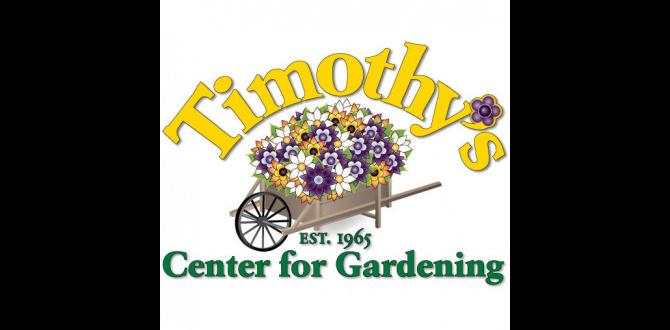Quick Summary
Creating safe indoor dog enclosures is essential for pet well-being and home management. This guide offers genius, beginner-friendly safety tips for choosing, setting up, and maintaining effective dog enclosures for indoors, ensuring your furry friend is secure and comfortable while you enjoy peace of mind.
Welcoming a dog into your home is pure joy, but it also brings responsibilities, especially when it comes to keeping them safe and preventing them from getting into mischief. Sometimes, our furry friends need a secure “den” of their own indoors, whether for training, rest, or when we can’t supervise them directly. The thought of setting up an indoor dog enclosure can feel a little daunting, but it doesn’t have to be! With a few smart tips, you can create a fantastic and safe space for your dog that works for everyone. We’ll cover everything you need to know to make this process smooth and successful, ensuring your dog feels happy and secure in their special spot.
Why Use Indoor Dog Enclosures?
Indoor dog enclosures, often referred to as crates, pens, or gates, serve a variety of important purposes for dog owners. They are not about confinement but about providing a structured, safe environment for your pet. For puppies, enclosures are invaluable for house training, teaching them to hold their bladder and not chew on inappropriate items. For adult dogs, they can be a safe haven during thunderstorms or fireworks, a place to rest undisturbed, or a tool to manage their behavior when you’re not around to supervise, preventing destructive chewing or accidents.
Think of an enclosure as your dog’s personal retreat. It helps them feel secure by having their own defined space. It’s also a fantastic way to manage their environment and protect your belongings. Whether you’re dealing with a new puppy, an energetic adolescent, or a dog with separation anxiety, an enclosure can be a key part of a balanced approach to dog ownership. It’s a proactive step that benefits both your dog’s well-being and the harmony of your household.
Choosing the Right Indoor Dog Enclosure
Selecting the perfect enclosure depends on your dog’s size, breed, age, and unique needs. The most common types include crates, exercise pens (x-pens), and baby gates. Each has its own advantages, and understanding these can help you make an informed decision.
Dog Crates
Crates are a popular choice for training and management. They come in various materials, like wire, plastic, and fabric, and are designed to mimic a den, which dogs instinctively feel safe in. A crate should be just large enough for your dog to stand up, turn around, and lie down comfortably. If the crate is too large, your dog might use one end as a potty area, defeating the purpose of house training. Many wire crates come with dividers that allow you to adjust the space as your puppy grows.
- Wire Crates: These are lightweight, easy to clean, and offer good ventilation. They are also collapsible, making them convenient for travel and storage. Many owners add cozy bedding and toys for comfort.
- Plastic Crates: Often preferred for travel due to their durability and security, plastic crates can also be used indoors. They provide a more den-like feel, which can be reassuring for some dogs.
- Fabric Crates: These are lightweight and portable, ideal for travel or temporary use. However, they are less durable and may not be suitable for dogs who chew or are prone to destructive behavior.
Exercise Pens (X-Pens)
Exercise pens are modular panels that can be configured into various shapes and sizes, offering more space than a typical crate. They are excellent for puppies or smaller dogs who need room to play and explore within a contained area. X-pens are versatile and can be used indoors or outdoors to create a safe play zone or to block off specific areas of your home. Look for sturdy metal pens that are tall enough to prevent your dog from jumping over them.
- Materials: Typically made from metal wire or sturdy plastic.
- Configuration: Panels connect to form a flexible enclosure.
- Height: Available in various heights to suit different dog sizes and jumping abilities.
Baby Gates and Pet Gates
Pet gates are a simple and effective way to block off rooms or hallways, preventing your dog from accessing certain areas. They come in pressure-mounted, hardware-mounted, and free-standing versions. While not a full enclosure, they are useful for managing larger spaces or for dogs that don’t require a full confinement area. Hardware-mounted gates are the most secure and recommended for the top of stairs or for very determined dogs.
- Pressure-Mounted: Easy to install and remove, good for doorways where you don’t want to drill holes. Not recommended for use at the top of stairs.
- Hardware-Mounted: Securely attached to walls with screws, offering the highest level of safety, especially for areas like staircases.
- Free-Standing: Offer versatility but are generally less secure for containing dogs who are determined to cross.
Genius Safety Tips for Indoor Dog Enclosures
Once you’ve chosen the right type of enclosure, setting it up safely is paramount. Safety isn’t just about preventing escape; it’s about ensuring your dog’s physical and mental well-being within their designated space.
Tip 1: Size Matters (The Right Fit)
This is the golden rule of dog enclosures. Too small, and it’s uncomfortable and can cause anxiety. Too large, and it can hinder potty training and feel less secure. A general rule of thumb is that your dog should be able to stand up, turn around, and lie down without their head or tail hitting the sides. For puppies, a divider is key so you can adjust the crate size as they grow, ensuring it remains appropriate.
For Crates: Measure your dog from the tip of their nose to the base of their tail, and from the ground to the top of their head or ears (whichever is taller). Add a few inches to these measurements to determine the ideal length, width, and height of the crate. A good resource for understanding crate sizing can be found on the American Veterinary Medical Association (AVMA), which often touches on responsible pet ownership practices, including safe containment.
Tip 2: Secure Location is Key
Where you place your dog’s enclosure is as important as the enclosure itself. Choose a quiet area of your home where your dog can feel calm and undisturbed, but also part of the family activities. Avoid placing it in a high-traffic area or directly next to a noisy appliance. A consistent location helps your dog associate the enclosure with their safe space.
- Quiet Spot: Away from doors, windows, and loud noises.
- Comfortable Temperature: Not too hot or too cold.
- Family Presence: Close enough to hear and see you, so they don’t feel isolated, but not so close that they are constantly stimulated.
Tip 3: “Den-ify” It: Make it Cozy and Safe
Your dog’s enclosure should feel like a safe, comfortable den. Add soft bedding, a few safe chew toys, and perhaps a familiar-smelling blanket. Ensure there are no loose threads or small parts on toys that could be chewed off and ingested. All bedding should be washable and free from choking hazards.
Safe Bedding Options:
| Type of Bedding | Pros | Cons | Safety Considerations |
|---|---|---|---|
| Orthopedic Foam Mats | Comfortable, supportive for joints. | Can be warm, some dogs may chew. | Ensure no loose covers or stuffing. |
| Washable Fleece Blankets | Soft, machine washable, affordable. | May be chewed and ingested. | Monitor for tearing/swallowing, use durable ones. |
| Stuffed Bolster Beds | Provides a sense of security with raised edges. | Stuffing can be ingested if torn. | Choose beds with rip-resistant covers. |
Tip 4: Remove All Potential Hazards
This is critical. Before introducing your dog to their enclosure, do a thorough sweep for anything they could chew, swallow, or get tangled in. This includes electrical cords, loose items, toxic plants, and anything small enough to be a choking hazard. If using a fabric crate or pen, check for any loose stitching or small decorative elements.
Checklist for Hazard Removal:
- Electrical cords and outlets
- Small objects (coins, buttons, hair ties)
- Toxic plants (many common houseplants are poisonous to dogs)
- Medications or cleaning supplies
- Loose threads on bedding or toys
Tip 5: Secure All Latches and Connectors
A dog finding an escape route can be stressful for everyone. Always double-check that latches on crates and gates are securely fastened. For exercise pens, ensure all connectors are tight and no panels are loose or bent, which could create gaps. Regular inspection of latches and hinges for wear and tear is a good practice.
Tip 6: Supervise Initial Introductions
Never just put your dog in an enclosure and close the door without a proper introduction. Make it a positive experience. Start by leaving the door open and letting your dog explore. Toss treats inside. Gradually progress to closing the door for short periods while you are present, and slowly increase the duration. This positive association is key to preventing anxiety.
Gradual Introduction Steps:
- Leave the enclosure door open, place treats/toys inside.
- Encourage your dog to enter. Praise and reward when they do.
- Close the door for a few seconds, then open.
- Gradually increase the time the door is closed while you are still in the room.
- Progress to leaving the room for short intervals.
Tip 7: Regular Checks and Maintenance
Dog enclosures, especially those made of wire or plastic, can accumulate dirt and grime. Regular cleaning is essential for hygiene and to prevent odors. Check for any signs of damage – bent wires, cracked plastic, or worn-out latches. Promptly repair or replace any damaged parts to maintain the enclosure’s integrity and safety.
A good cleaning schedule is crucial. For materials like wire and plastic, a bleach-and-water solution (diluted properly, of course, and rinsed thoroughly) or a pet-safe disinfectant works well. Fabric covers should be washed according to their care instructions. Ensure the enclosure is completely dry before your dog returns to it.
Tip 8: Consider Your Dog’s Temperament
Some dogs naturally adapt to enclosures, while others may exhibit anxiety. If your dog is very anxious, a crate might not be the best initial solution. An exercise pen or a securely gated-off area might be a gentler start. Consult with a professional trainer or a veterinarian if you have concerns about your dog’s anxiety or behavioral issues.
Understanding your dog’s breed tendencies can also be helpful. For instance, breeds bred for guarding might be more territorial, and their enclosure should feel like their secure territory. Breeds known for high energy might need a more spacious pen to move around. Resources like the American Kennel Club (AKC) offer extensive breed information that can guide your choices.
Tip 9: Provide Mental Stimulation
Even in a safe enclosure, dogs need mental stimulation to prevent boredom and potential destructive behaviors. Puzzle toys, long-lasting chews (like bully sticks or safe dental chews), and KONGs filled with frozen peanut butter or yogurt can keep your dog occupied and mentally engaged while they are in their enclosure. Rotate these items to keep them novel and exciting.
Tip 10: Never Use the Enclosure for Punishment
This cannot be stressed enough. The enclosure should always be a positive, safe space for your dog. If you use it for punishment, your dog will associate it with negative experiences, leading to fear and anxiety. This can undo all your positive training efforts and make your dog reluctant to go into their safe haven.
Common Indoor Dog Enclosure Mistakes to Avoid
Even with the best intentions, new dog owners can sometimes fall into common traps when setting up indoor dog enclosures. Being aware of these can save you a lot of trouble and ensure a better experience for your dog.
Mistake 1: Choosing the Wrong Size
As highlighted before, this is a primary error. A crate that’s too large makes house training difficult, and one too small is simply cruel and causes distress. Always measure your dog and adhere to guidelines for appropriate sizing.
Mistake 2: Improper Placement
Placing a crate in a busy hallway, near a noisy appliance, or in a drafty corner can make it an unpleasant experience for your dog. They need a calm, secure spot that feels like their own retreat, not a place of constant disruption.
Mistake 3: Over-Confinement
No dog should spend excessive amounts of time in an enclosure. Dogs are social animals and need interaction, exercise, and playtime. Overdoing it can lead to behavioral problems, anxiety, and physical health issues. Follow recommended guidelines for how long a dog can safely be left in an enclosure based on their age and training level.
| Age Group | Maximum Recommended Time | Notes |
|—————-|————————–|———————————————|
| Puppies (under 6 months) | 1-2 hours (gradually increasing) | Never leave a puppy longer than they can hold it. |
| Adult Dogs (fully trained) | 6-8 hours (maximum, with breaks) | Ensure exercise and mental stimulation outside. |
Mistake 4: Insufficient Enrichment
Leaving a dog in an enclosure with absolutely nothing to do invites boredom and frustration. Always provide appropriate chew toys or puzzle feeders to keep their minds active and prevent destructive chewing on the enclosure itself or surrounding items.
Mistake 5: Forgetting About Ventilation and Airflow
Ensure the enclosure allows for adequate airflow. Plastic crates can sometimes become stuffy, and solid fabric enclosures need to have good mesh panels. Overheating can be dangerous, so always consider the environment and your dog’s comfort.
FAQ: Indoor Dog Enclosures
Q1: How do I get my dog to like their enclosure?
A: Make it a positive place! Start with short, positive introductions, offer treats and favorite toys inside, and never use it for punishment. Associate it with good things like nap time and quiet relaxation.
Q2: What is the best type of enclosure for a puppy?
A: A wire crate with a divider is often recommended. This allows you to adjust the size as your puppy grows, ensuring it’s always the right fit for potty training and comfort.
Q3: Can I leave my dog in a crate all day?
A: No, you should never leave a dog in an enclosure all day. Puppies under six months should not be crated for more than a few hours at a time, and adult dogs should have breaks for exercise, potty breaks, and socialization. The general rule is that a dog can hold its bladder for about one hour per month of age, up to a maximum of 8-9 hours for a fully grown adult.
Q4: What if my dog barks or whines when I put them in the enclosure?
A: Initially, this can happen. Ignore the barking if it’s attention-seeking and reward them with attention or a treat when they are quiet. If it’s true distress, you may need to slow down the introduction process or consult a professional trainer.
Q5: How do I clean an indoor dog enclosure?
A: Most wire and plastic enclosures can be cleaned with soap and water or a diluted bleach solution (ensure thorough rinsing and drying). Fabric covers and bedding should be machine washable according to their labels. Regular cleaning prevents odors and maintains hygiene.
Q6: Is a tall X-pen safe for a dog that jumps?
A: For dogs that are avid jumpers or climbers, you’ll need a tall x-pen, usually 36 inches or higher. For really determined dogs, a top can be added to the pen, or you might consider a more secure crate or a confined room.
Conclusion
Creating a safe and comfortable space for our canine companions is a vital part of responsible pet ownership. Indoor dog enclosures, when chosen and set up with care and attention to safety, become a valuable tool for training, security, and your dog’s overall well-being. By following these genius safety tips – from ensuring the right size and a secure location to “den-ifying” the space and removing hazards – you can build a haven that your dog will not only tolerate but perhaps even love. Remember, consistency, positive reinforcement, and regular maintenance are key to a successful and safe indoor enclosure experience. Your effort in creating this safe zone will foster a happier, more



